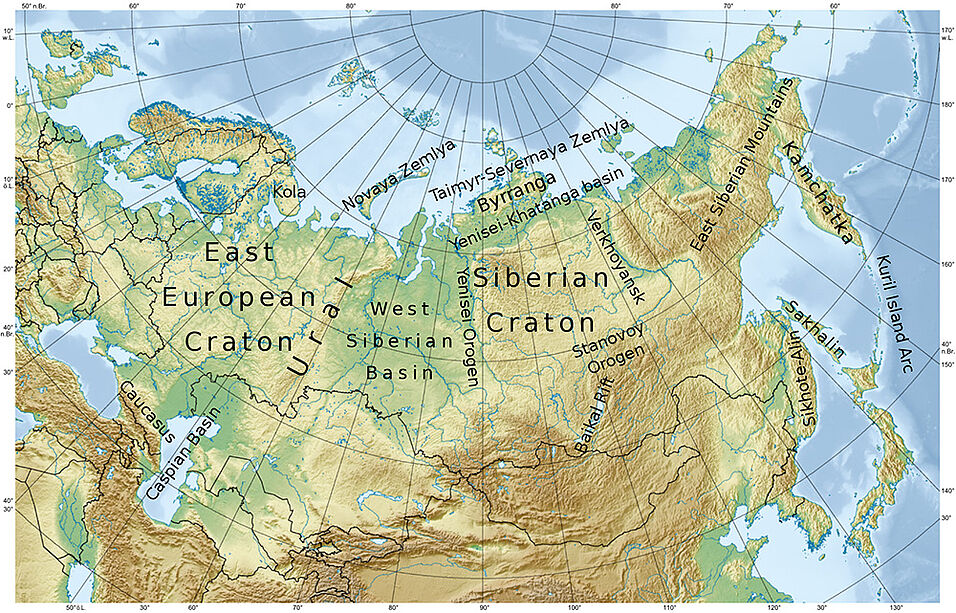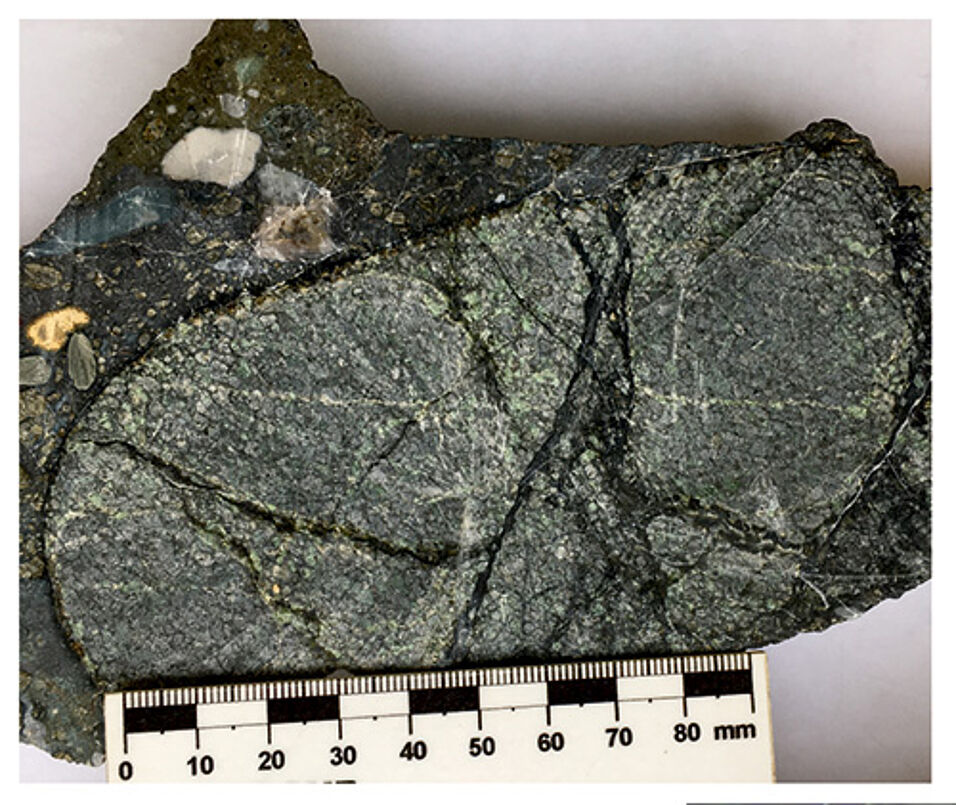The curiosity about the structure and origin of Earth has always accompanied humankind. However, the deepest portions of our planet are still largely precluded from observation. “The greatest depth reached by scientific drilling is only about 12 km, which is quite negligible when compared to the Earth radius of about 6371 km”, explains Federico Casetta from the Department of Lithospheric Research at the University of Vienna: “So the only way to explore the interior of our planet is making use of indirect geophysical or petrological evidence” says the petrologist.
Fragments of Earth's mantle
Most of the insights into the deepest realms of Earth come from fragments of mantle rocks, so called xenoliths, and diamonds brought to the surface by kimberlitic magmas in cratonic areas.
- Cratons are the oldest and most stable regions of continents, where the lithosphere can be more than 250 km thick. They reach ages of more than 2.5 Billion of years and are composed of a thick crust and deep mantle roots.
“In the last decades, numerous models were proposed regarding the genesis of cratonic roots, their composition, temperature and pressure conditions and onset of deformation and metasomatic reactions in the deep lithosphere as well as the genesis of kimberlitic magmas themselves”, says the petrologist. But despite substantial achievements, the picture of the lithospheric mantle beneath a craton is still far from fully understood: “The problem is, that its ’primary’ signature is usually overprinted by repeated metasomatic events associated with the infiltration of kimberlite-like melts”, he explains.
Siberian window as a very good one
Furthermore, the limited representativeness of mantle xenoliths, which represent only small portions of the lithosphere, and their widespread alteration make the study of the deep Earth very intricate. “We are kind of looking through extremely small windows to get a quite big panoramic view of the Earth mantle”, says Federico Casetta. Still, the Siberian windows he chooses for his Lisa Meitner-project, are very good ones: “Due to their relatively low degree of alteration and lithological variability, the mantle xenoliths brought to the surface by kimberlitic pipes in the Siberian craton are excellent materials for investigating the nature and evolution of the deep lithosphere.”
Kimberlites: "Pipes" for mantle rocks
- Kimberlites are igneous rocks typically found in cratonic areas, and formed from the crystallization of magmas rich in volatiles, produced at great depth in the Earth’s mantle (200-300 km).
- The large amounts of volatiles (especially CO2) contained in kimberlites make their ascent towards the Earth’s surface extremely fast, and facilitate the incorporation of fragments of mantle rocks during rising. Kimberlites mostly occur as “pipes”, that are vertical intrusions formed as the result of explosive diatreme volcanism, but can also be found as dykes or sills. The composition and microstructure of diamonds and minerals derived from the mantle transition zone (400-650 km) provide evidence of repeated events of deformation and melt/fluid-rock interactions (metasomatism), suggesting that the Earth’s mantle is a highly dynamic system.
In his project, Federico Casetta investigates a unique collection of fresh granular to highly deformed and recrystallized peridotitic xenoliths sampled from different lithospheric depths by two neighbouring kimberlitic pipes (Udachnaya and Sytykanskaya - Yakutia). “This will enable us to reconstruct the complete pressure-temperature-time-composition (P-T-t-X) path experienced by the mantle beneath Siberia”, explains co-applicant Rainer Abart, head of the Department of Lithospheric Research.
View from different angles
In this project, Federico Casetta is going to combine state-of-the-art high-resolution microstructural, crystal orientation, petrological and geochemical analyses of those xenoliths with thermodynamic, kinetic and deformation/recrystallization modelling. Using this multidisciplinary approach, he tries to unlock the sequence of melt/fluid-rock interactions and deformation events that took place along an entire sub-cratonic lithospheric column – “and hence deepen our understanding of the origin and evolution of Earth’s mantle and the main processes exerting a key control on global scale tectonics, which ultimately shapes the habitable surface of our planet”, says Federico Casetta.
About the project
- Lise-Meitner Project n.: M-3080-N
- Applicant (P.I.): Dr. Federico Casetta
- Co-applicant: Univ. Prof. Mag. Dr. Rainer Abart
- Project title: P-T-t-X EVOLUTION OF THE SIBERIAN SUB-CRATONIC LITHOSPHERE
- Project start date: 14.06.2021
- Project duration: 2 years






